Research on the Prediction Model of Blasting Vibration Velocity in the Dahuangshan Mine
Abstract
:1. Introduction
2. Materials and Methods
2.1. Engineering Overview
2.2. Blasting Vibration Monitoring
2.3. Theory of the EWT Method
2.4. Theory of the XGBoost Method
3. Model
3.1. EWT–XGBoost Model
3.2. High Steep Slopes Model
4. Result and Discussion
4.1. Analysis of the Learning Results
4.2. Predictive Analysis of Nodal Vibration Velocity
5. Conclusions
Author Contributions
Funding
Conflicts of Interest
References
- Nikkhah, A.; Vakylabad, A.B.; Hassanzadeh, A.; Niedoba, T.; Surowiak, A. An Evaluation on the Impact of Ore Fragmented by Blasting on Mining Performance. Minerals 2022, 12, 258. [Google Scholar] [CrossRef]
- Gharehgheshlagh, H.H.; Alipour, A. Ground vibration due to blasting in dam and hydropower projects. Rud.-Geol.-Naft. Zb. 2020, 35, 59–66. [Google Scholar]
- Feher, J.; Cambal, J.; Pandula, B.; Kondela, J.; Sofranko, M.; Mudarri, T.; Buchla, I. Research of the technical seismicity due to blasting works in quarries and their impact on the environment and population. Appl. Sci. 2021, 11, 2118. [Google Scholar] [CrossRef]
- Jiang, N.; Zhang, Y.; Zhou, C.; Wu, T.; Zhu, B. Influence of Blasting Vibration of MLEMC Shaft Foundation Pit on Adjacent High-Rise Frame Structure: A Case Study. Energies 2020, 13, 5140. [Google Scholar] [CrossRef]
- Ma, Y.; Liu, C.; Wang, P.; Zhu, J.; Zhou, X. Blast Vibration Control in A Hydropower Station for the Safety of Adjacent Structure. Appl. Sci. 2020, 10, 6195. [Google Scholar] [CrossRef]
- Lutovac, S.; Medenica, D.; Gluščević, B.; Tokalić, R.; Beljić, Č. Some Models for Determination of Parameters of the Soil Oscillation Law during Blasting Operations. Energies 2016, 9, 617. [Google Scholar] [CrossRef] [Green Version]
- Mesec, J.; Strelec, S.; Tezak, D. Ground vibrations level characterization through the geological strength index (GSI). Rud.-Geol.-Naft. Zb. 2017, 32, 1–6. [Google Scholar] [CrossRef]
- Yin, Z.Q.; Hu, Z.X.; Wei, Z.D.; Zhao, G.M.; Ma, H.F.; Zhuo, Z.; Feng, R.M. Assessment of Blasting-Induced Ground Vibration in an Open-Pit Mine under Different Rock Properties. Adv. Civ. Eng. 2018, 2018, 4603687. [Google Scholar] [CrossRef]
- LIN, H. Blasting vibration propagation law and control technology of high slope. Eng. Blasting 2020, 26, 69–74. [Google Scholar]
- Yue, Z.; Wu, Y.; Wei, Z.; Wang, G.; Wang, Y.; Li, X.; Zhou, Y. Prediction of blasting vibration effect in open-pit mine based on PSO-LSSVM model. Eng. Blasting 2020, 26, 1–8. [Google Scholar]
- Sun, M.; Wu, L.; Yuan, Q.; Zhou, Y.; Ma, C. Blasting vibration prediction of underground gas storage caverns based on PSO-LSSVM algorithm. Blasting 2017, 34, 145–150. [Google Scholar]
- Yan, Y.; Hou, X.; Cao, S.; Li, R.; Zhou, W. Forecasting the Collapse-Induced Ground Vibration Using a GWO-ELM Model. Buildings 2022, 12, 121. [Google Scholar] [CrossRef]
- Yu, Z.; Shi, X.; Zhou, J.; Chen, X.; Qiu, X. Effective Assessment of Blast-Induced Ground Vibration Using an Optimized Random Forest Model Based on a Harris Hawks Optimization Algorithm. Appl. Sci. 2020, 10, 1403. [Google Scholar] [CrossRef] [Green Version]
- Zhang, H.; Zhou, J.; Jahed Armaghani, D.; Tahir, M.M.; Pham, B.T.; Huynh, V.V. A Combination of Feature Selection and Random Forest Techniques to Solve a Problem Related to Blast-Induced Ground Vibration. Appl. Sci. 2020, 10, 869. [Google Scholar] [CrossRef] [Green Version]
- Lak, M.; Marji, M.F.; Bafghi, A.Y.; Abdollahipour, A. Analytical and numerical modeling of rock blasting operations using a two-dimensional elasto-dynamic Green’s function. Int. J. Rock Mech. Min. Sci. 2019, 114, 208–217. [Google Scholar] [CrossRef]
- Lei, Z.; Gao, Z.; Zhuo, Y.; He, X.; Yuan, Y.; He, L. Research on vibration propagation law and dynamic response characteristics of bench blasting. Blasting 2019, 36, 137–145. [Google Scholar]
- Choi, Y.-H.; Lee, S.S. Predictive Modelling for Blasting-Induced Vibrations from Open-Pit Excavations. Appl. Sci. 2021, 11, 7487. [Google Scholar] [CrossRef]
- Gonen, A. Investigation of Fault Effect on Blast-Induced Vibration. Appl. Sci. 2022, 12, 2278. [Google Scholar] [CrossRef]
- Yan, B.; Liu, M.; Meng, Q.; Li, Y.; Deng, S.; Liu, T. Study on the Vibration Variation of Rock Slope Based on Numerical Simulation and Fitting Analysis. Appl. Sci. 2022, 12, 4208. [Google Scholar] [CrossRef]
- Gilles, J. Empirical wavelet transform. IEEE Trans. Signal Processing 2013, 61, 3999–4010. [Google Scholar] [CrossRef]
- Huang, N.E.; Shen, Z.; Long, S.R.; Wu, M.C.; Shih, H.H.; Zheng, Q.; Yen, N.-C.; Tung, C.C.; Liu, H.H. The empirical mode decomposition and the Hilbert spectrum for nonlinear and non-stationary time series analysis. Proc. R. Soc. London. Ser. A Math. Phys. Eng. Sci. 1998, 454, 903–995. [Google Scholar] [CrossRef]
- Daubechies, I. Ten Lectures on Wavelets; SIAM: Philadelphia, PA, USA, 1992. [Google Scholar]
- Jaffard, S.; Meyer, Y.; Ryan, R.D. Wavelets: Tools for Science and Technology; SIAM: Philadelphia, PA, USA, 2001. [Google Scholar]
- Meyer, Y. Wavelets, Vibrations and Scalings; American Mathematical Soc.: Providence, RI, USA, 1998. [Google Scholar]
- Chen, T.; Guestrin, C. Xgboost: A scalable tree boosting system. In Proceedings of the 22nd Acm Sigkdd International Conference on Knowledge Discovery and Data Mining, San Francisco, CA, USA, 13 August 2016; pp. 785–794. [Google Scholar]
- Qin, F.; Xiang-zhen, K.; Hao, W.; Zi-Ming, G. Determination of Holmquist-Johnson-Cook consitiutive model parameters of rock. Eng. Mech. 2014, 31, 197–204. [Google Scholar]
- Feng, M.; Wenhua, Z.; Dongqing, L. Application of water-couple charge blasting in tunnel excavation. Chin. J. Undergr. Space Eng. 2012, 8, 1008–1013. [Google Scholar]
- Safety Regulations for Blasting: GB 6722-2014; China Standards Press: Beijing, China, 2015.

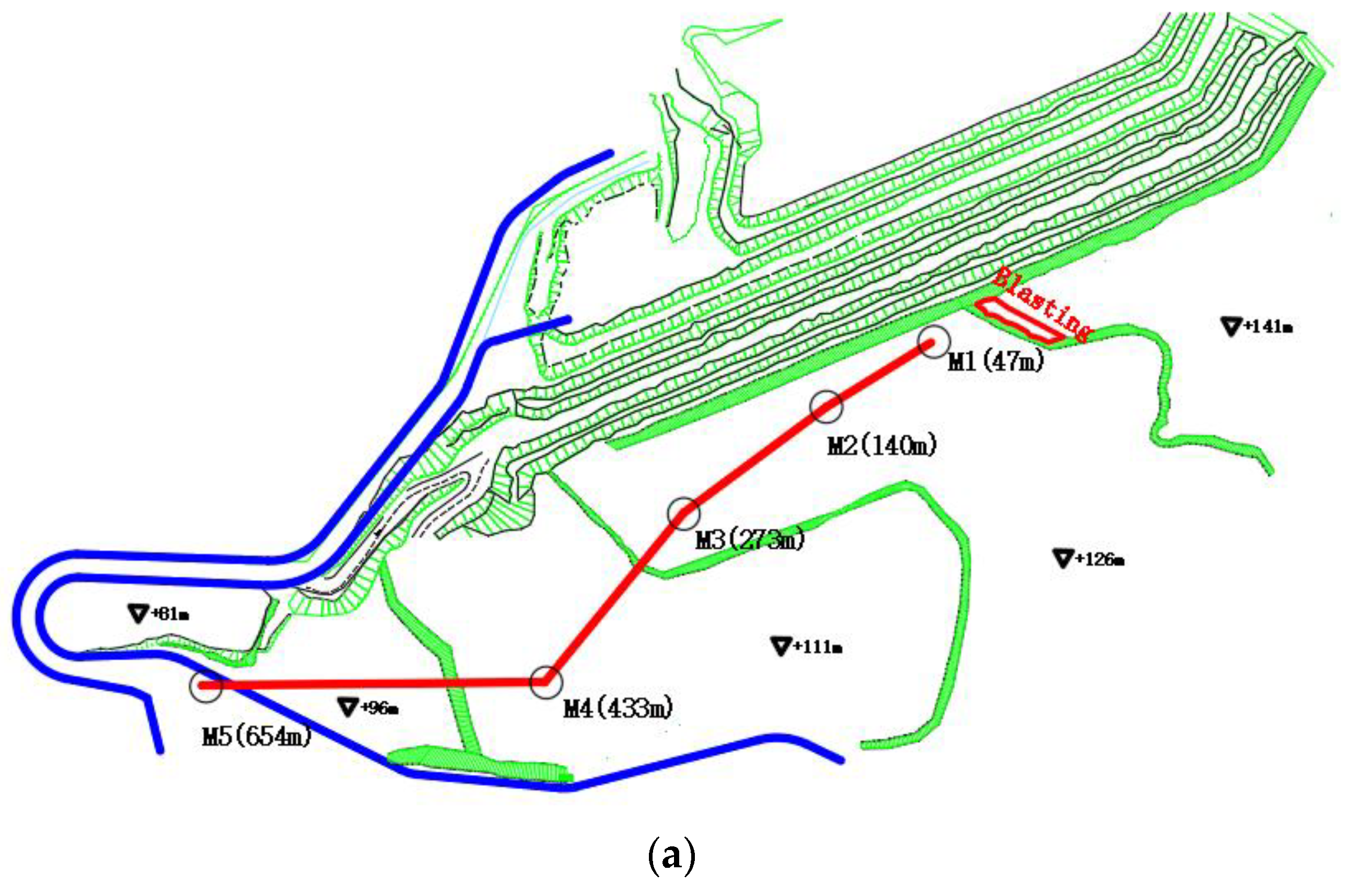
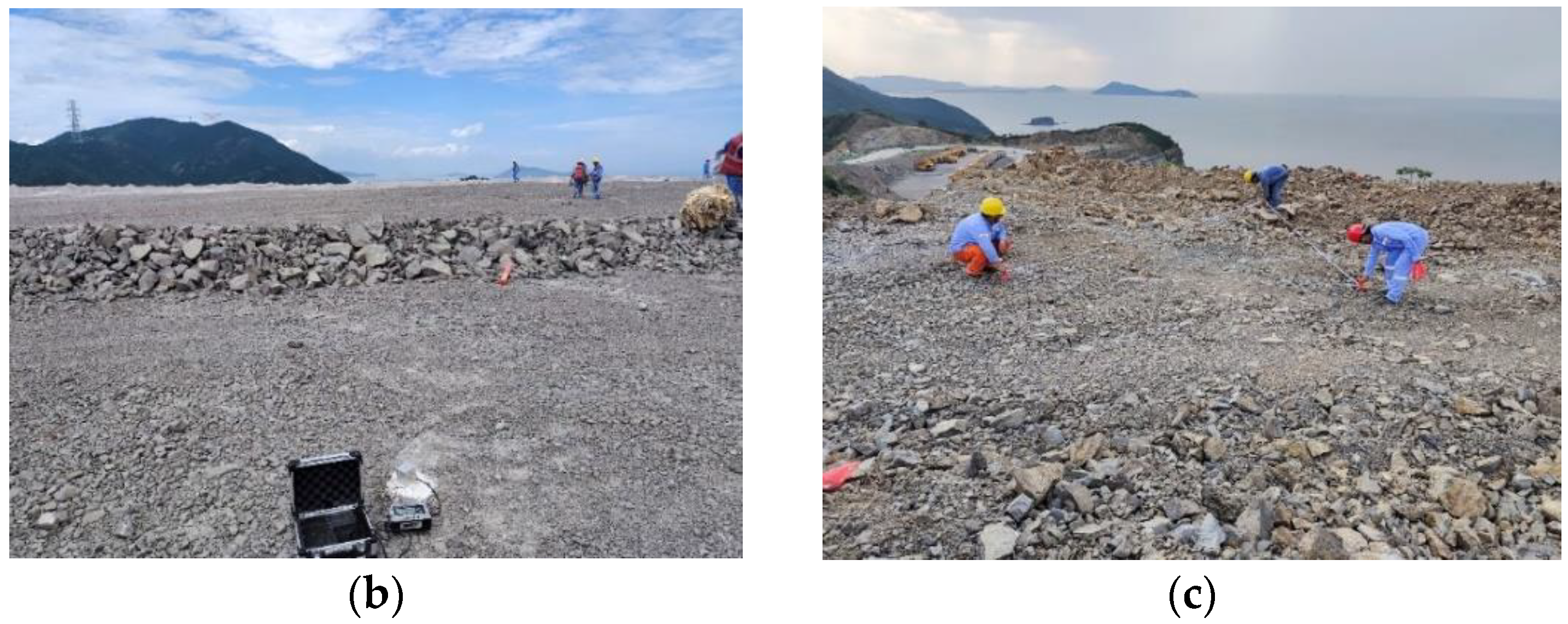
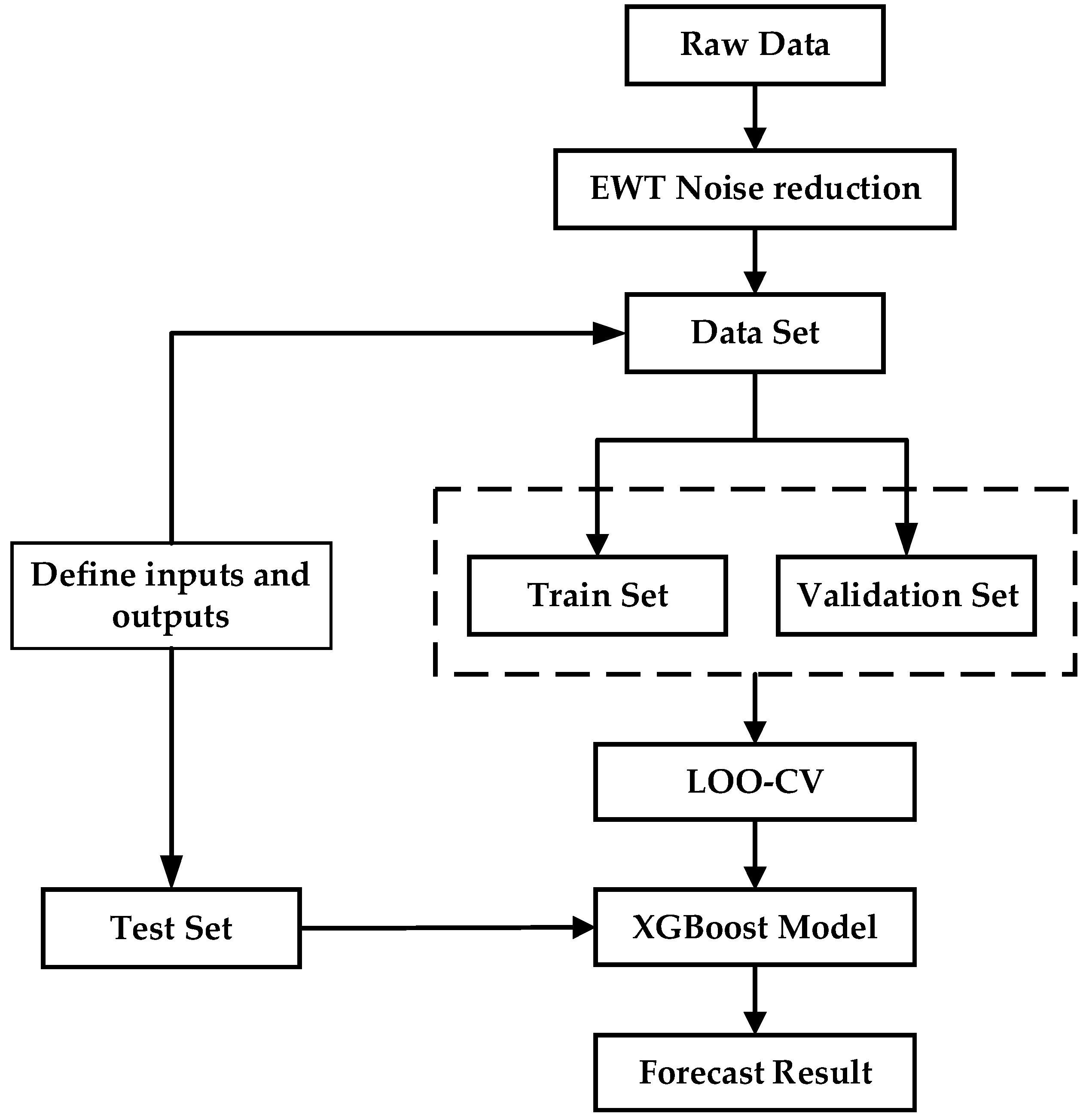

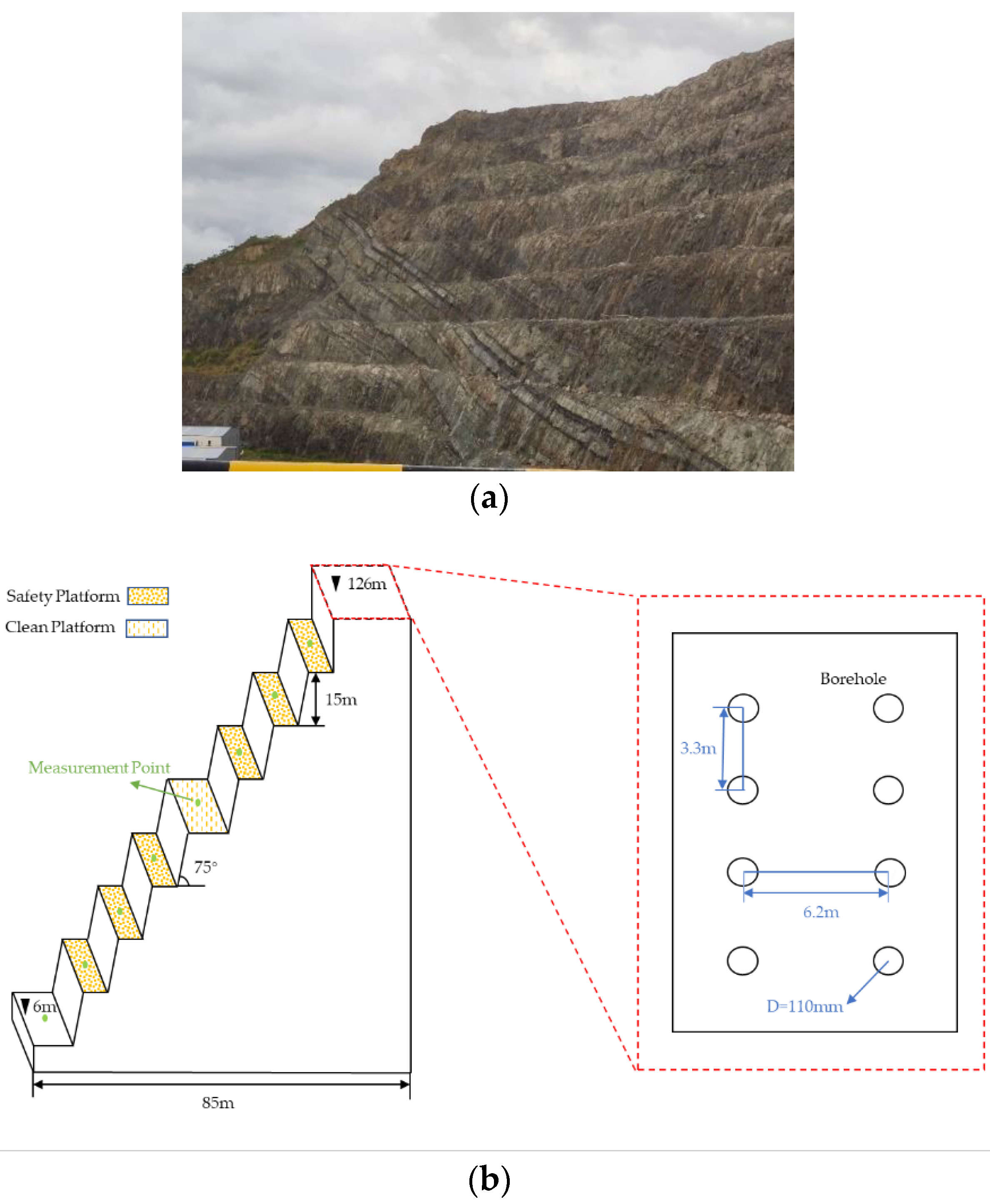

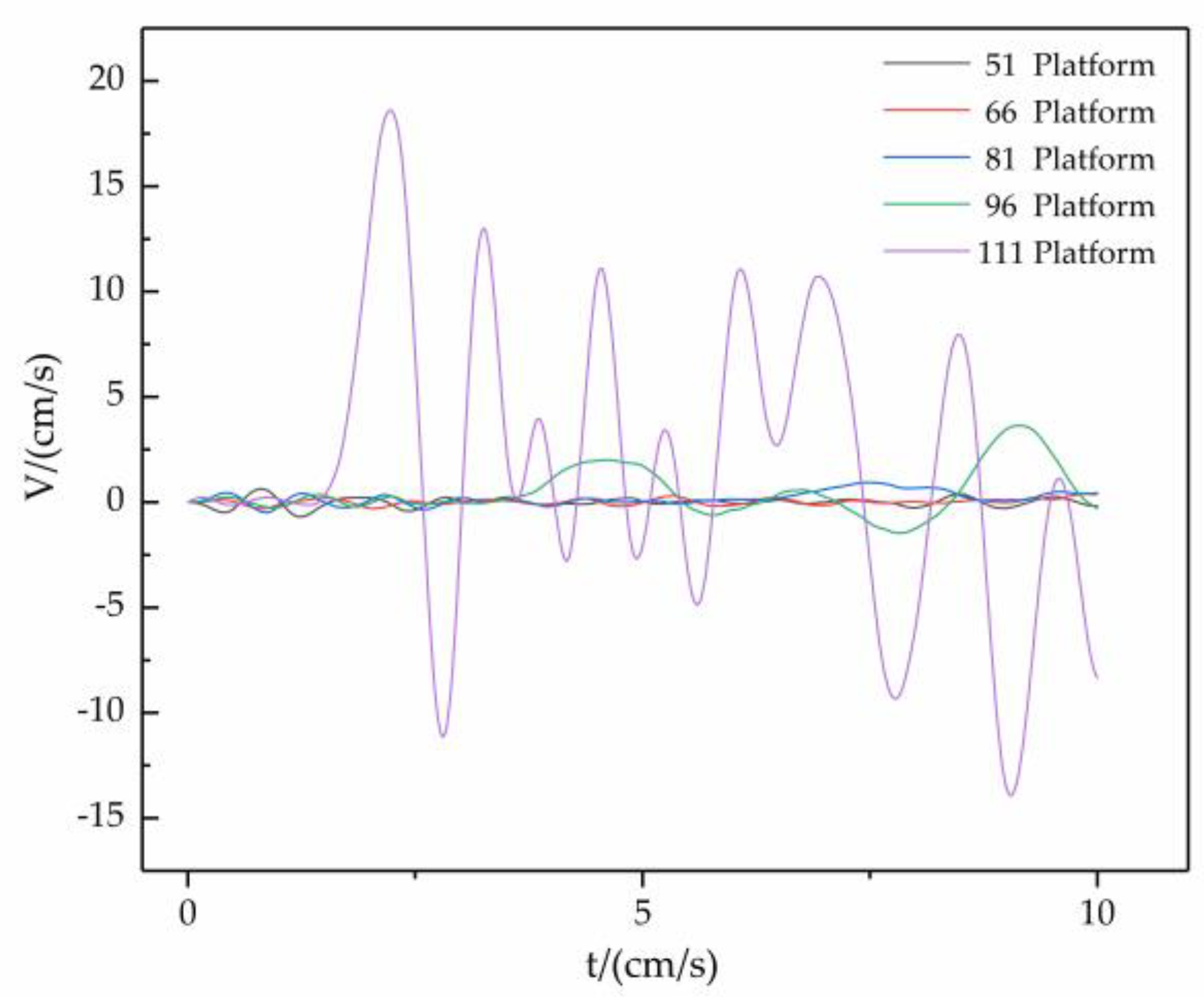

| No. | Q (Kg) | R (m) | H (m) | PPV (cm/s) |
|---|---|---|---|---|
| 1 | 9072 | 466 | 81 | 0.335 |
| 2 | 9518 | 389 | 81 | 0.343 |
| 3 | 9942 | 486 | 96 | 0.339 |
| 4 | 9975 | 38 | 30 | 8.390 |
| 5 | 9975 | 201 | 45 | 0.193 |
| 6 | 9975 | 70 | 75 | 3.710 |
| 7 | 9975 | 129 | 90 | 0.350 |
| 8 | 5745 | 671 | 121 | 0.043 |
| 9 | 5745 | 683 | 121 | 0.051 |
| 10 | 10,077 | 80 | −15 | 6.730 |
| 11 | 10,077 | 152 | 30 | 0.210 |
| 12 | 10,077 | 522 | 45 | 0.783 |
| 13 | 10,077 | 678 | 90 | 0.192 |
| 14 | 7401 | 47 | 15 | 5.830 |
| 15 | 7401 | 140 | 15 | 1.774 |
| 16 | 7401 | 273 | 15 | 0.416 |
| 17 | 7401 | 432 | 30 | 0.143 |
| 18 | 7401 | 654 | 51 | 0.152 |
| 19 | 9545 | 55 | 15 | 2.283 |
| 20 | 9545 | 161 | 15 | 0.717 |
| 21 | 9545 | 286 | 15 | 0.524 |
| 22 | 9545 | 677 | 51 | 1.012 |
| 23 | 8041 | 484 | 96 | 0.287 |
| 24 | 9812 | 523 | 81 | 0.798 |
| 25 | 8041 | 461 | 90 | 0.149 |
| 26 | 9812 | 209 | 75 | 3.108 |
| 27 | 8041 | 592 | 75 | 0.116 |
| 28 | 9812 | 304 | 60 | 3.979 |
| 29 | 8041 | 588 | 45 | 0.198 |
| 30 | 9812 | 381 | 30 | 0.948 |
| 31 | 8041 | 601 | 30 | 0.323 |
| 32 | 9812 | 52 | 15 | 9.026 |
| ρ/(g·cm−3) | G/(MPa) | A | B | C | N | fc/(MPa) |
|---|---|---|---|---|---|---|
| 1.8 | 6543 | 0.55 | 1.77 | 0.0097 | 0.77 | 50 |
| T/(MPa) | ε0/(s−1) | εf,min | Smax | Pc/(MPa) | Uc | PL/(MPa) |
| 3.3 | 1 × 10−6 | 0.01 | 17 | 17 | 0.00253 | 2500 |
| UL | D1 | D2 | K1/(MPa) | K2/(MPa) | K3/(MPa) | fs |
| 0.38 | 0.04 | 1 | 3100 | 6000 | 8400 | 0.035 |
| C0 | C1 | C2 | C3 | C4 | C5 | C6 | E/(MPa) |
|---|---|---|---|---|---|---|---|
| 0 | 0 | 0 | 0 | 0.4 | 0.4 | 0 | 0.25 |
| ρ/(kg/m3) | D/(m/s) | G/(MPa) | A/(GPa) | B/(Gpa) | R1 | R2 | ω | E/(MPa) |
|---|---|---|---|---|---|---|---|---|
| 1100 | 3600 | 3500 | 214.4 | 0.182 | 4.2 | 0.9 | 0.15 | 4 192 |
| No. | Q(Kg) | R(m) | H(m) | XGBoost Model | EWT–XGBoost Model | ||
|---|---|---|---|---|---|---|---|
| Measured Value | Predicted Value | Measured Value | Predicted Value | ||||
| 1 | 9975 | 38 | 30 | 8.390 | 8.231 | 3.882 | 3.877 |
| 2 | 5745 | 683 | 121 | 0.051 | 0.057 | 0.013 | 0.012 |
| 3 | 7401 | 47 | 15 | 5.830 | 5.800 | 1.566 | 1.563 |
| 4 | 9545 | 55 | 15 | 2.283 | 2.369 | 0.941 | 0.946 |
| 5 | 9812 | 523 | 81 | 0.798 | 0.806 | 0.063 | 0.064 |
Publisher’s Note: MDPI stays neutral with regard to jurisdictional claims in published maps and institutional affiliations. |
© 2022 by the authors. Licensee MDPI, Basel, Switzerland. This article is an open access article distributed under the terms and conditions of the Creative Commons Attribution (CC BY) license (https://creativecommons.org/licenses/by/4.0/).
Share and Cite
Guo, J.; Zhang, C.; Xie, S.; Liu, Y. Research on the Prediction Model of Blasting Vibration Velocity in the Dahuangshan Mine. Appl. Sci. 2022, 12, 5849. https://doi.org/10.3390/app12125849
Guo J, Zhang C, Xie S, Liu Y. Research on the Prediction Model of Blasting Vibration Velocity in the Dahuangshan Mine. Applied Sciences. 2022; 12(12):5849. https://doi.org/10.3390/app12125849
Chicago/Turabian StyleGuo, Jiang, Chen Zhang, Shoudong Xie, and Yi Liu. 2022. "Research on the Prediction Model of Blasting Vibration Velocity in the Dahuangshan Mine" Applied Sciences 12, no. 12: 5849. https://doi.org/10.3390/app12125849
APA StyleGuo, J., Zhang, C., Xie, S., & Liu, Y. (2022). Research on the Prediction Model of Blasting Vibration Velocity in the Dahuangshan Mine. Applied Sciences, 12(12), 5849. https://doi.org/10.3390/app12125849






